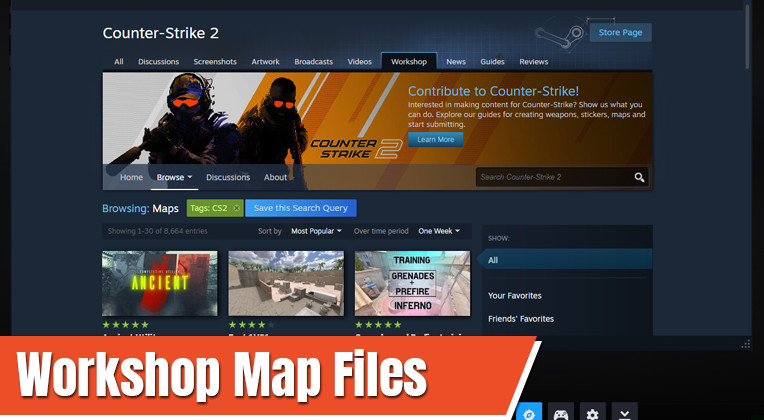Blggzz: Your Daily Dose of Insight
Stay updated with the latest news and informative articles.
Diving into the Creative Chaos of CS2 Workshop Maps
Explore the wild world of CS2 workshop maps—unleash your creativity, discover epic designs, and join the chaos today!
Exploring the Evolution of CS2 Workshop Maps: A Comprehensive Guide
The evolution of CS2 Workshop Maps has become a fascinating journey for gamers and developers alike. These maps have transformed from simple layouts to complex environments that enhance gameplay and creativity. The numerous tools and updates provided by Valve have empowered the community to push the boundaries of what is possible in Counter-Strike 2. As we explore this evolution, we’ll discuss key milestones, notable features, and the community's role in shaping these maps.
One of the most significant changes in CS2 Workshop Maps is the introduction of sophisticated scripting mechanics and design elements, allowing creators to customize experiences to a greater extent. Features such as dynamic lighting, interactive objects, and custom game modes have revolutionized how maps are created and played. This shift not only enhances player engagement but also encourages a thriving community of modders and map makers, each contributing their own flair to the ever-expanding world of CS2 maps.

Counter-Strike is a highly popular tactical first-person shooter game that has been captivating players for years. One of the notable weapons in the game is the mac 10, which is favored for its high rate of fire and effectiveness in close quarters. The game's competitive nature creates an engaging experience for both casual and professional players alike.
Top Tips for Creating Engaging CS2 Workshop Maps
Creating engaging CS2 workshop maps requires a balance of creativity and technical know-how. One of the top tips is to focus on gameplay flow. Make sure your map encourages natural progression through its layout. Consider using features like chokepoints and open spaces strategically to create dynamic encounters. Additionally, incorporating visually interesting elements such as landmarks can help players navigate and remember key areas of your map. Remember, a well-thought-out layout not only enhances the player experience but also keeps them coming back for more.
Another crucial element to consider is visual aesthetics. Utilize a coherent theme that reflects the intended atmosphere of your map. Whether it's a serene forest or a gritty urban environment, consistency in texture, color palette, and props will enhance immersion. To further elevate player engagement, consider adding interactive elements like secret paths or hidden treasure locations. This encourages exploration and adds an exciting layer to the gameplay experience. By prioritizing both flow and visual appeal, you can create CS2 workshop maps that are not only fun to play but also memorable.
What Makes a CS2 Workshop Map Stand Out? Key Elements to Consider
Creating a successful CS2 workshop map goes beyond just good aesthetics; there are several key elements that contribute to a standout experience. First and foremost, level design plays a critical role. A well-structured map should offer a balance of open spaces and strategically placed cover, allowing for engaging gameplay. Additionally, integrating unique gameplay mechanics can set a workshop map apart from the rest. This could include interactive elements such as moving platforms or environmental hazards that challenge players in new ways.
Another essential factor to consider is visual consistency. Using a cohesive art style can enhance immersion and make the map more visually appealing. Players are more likely to remember a map that has a strong visual identity, so consider utilizing thematic colors and textures that complement the gameplay. Furthermore, incorporating feedback mechanisms, such as audio cues or dynamic lighting changes, can greatly improve player experience and provide crucial information during intense moments. By focusing on these elements, you can create a CS2 workshop map that not only stands out but also captivates and engages players.